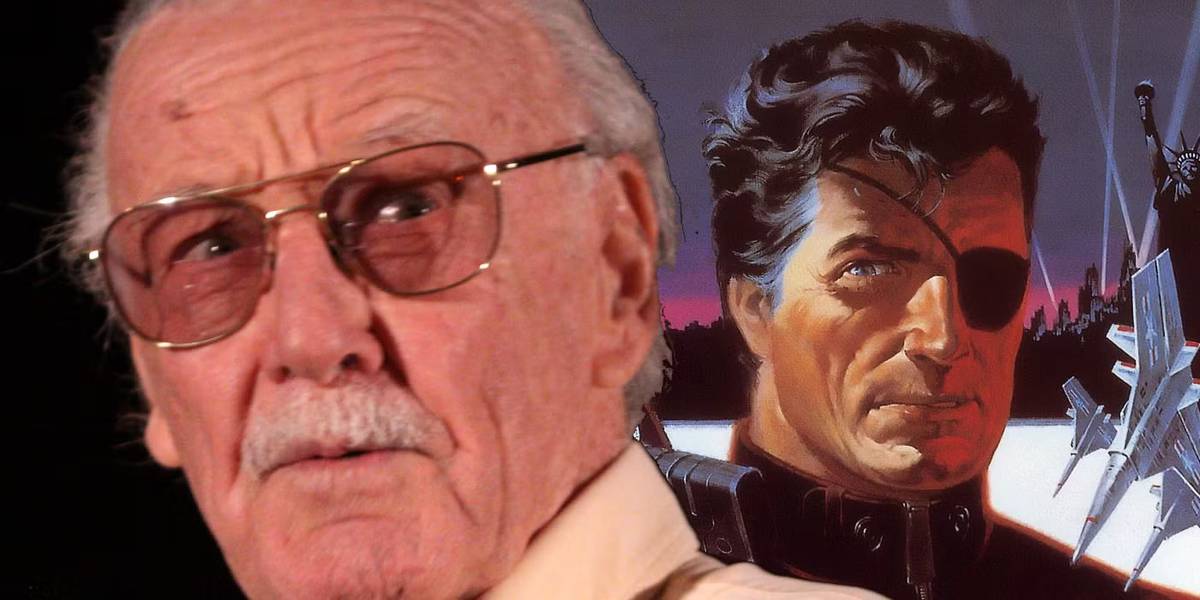[[{“value”:”
Contains graphic imagery.
Marvel Comics once released a Nick Fury comic so obscene and awe-shockingly violent that even the iconic Stan Lee had to break his silence to condemn the series. Part of Marvel’s MAX imprint of adult-oriented comics, Fury follows Nick Fury as he returns from Vietnam to wage a new war of his own on American soil. While entertaining in its own right, Fury is undoubtedly crude, even for the time.
Fury (2001) – by Garth Ennis, Darick Robertson, and Jimmy Palmiotti – is a six-part miniseries published under Marvel’s adult-oriented imprint, MAX.
The series, like many of MAX’s publications, steps away from the super-theatrics of Marvel’s main comics to instead tell a horrifically grittier story about Colonel Nick Fury trying to find a new purpose after his service as a spy during the Cold War. This series soon became one of Marvel’s goriest and morally perverse comics at the time, triggering a wave of backlash for the series itself and Marvel MAX as a whole.
Marvel MAX: Marvel’s Adult-Oriented Brand Of Comics
How The Creator Of The Boys Wrote For Nick Fury
First, it’s worth understanding what exactly the Marvel MAX imprint is to best understand why this comic became what it is. After being bound by the strict regulations of the Comic Code Authority (CCA) for years, Marvel Comics decided to reject the CCA entirely and develop its own comic rating system alongside a specific imprint dedicated to mature audiences. With Marvel’s content no longer constricted by the CCA, Marvel MAX became the first time Marvel would ever produce comics with uncensored content.
Related
Am I the Only One Who Thinks Marvel Just Quietly Changed Its Entire Timeline?
Thanks to a prophetic vision and a change of heart, the course of the world’s most tragic war shifted in the Allies’ favor and saved the world.
While many of the comics did succeed in telling more emotionally complex stories, their often gratuitous use of gore and violence drew shocked awe from readers, critics, DC Comics, and Stan Lee himself. Garth Ennis, who wrote the Fury series alongside multiple Punisher MAX series and most notably The Boys, especially employs the use of violence in his comics, which often focus on war-born trauma and the grotesquely harsh effects that PTSD has on soldiers when they return home. Ultimately, Marvel MAX and Garth Ennis both intended for these comics to inspire the shock they received.
Fury Is A Blood-Soaked Story Of Post-War Trauma
Nick Fury Craved Violence After Returning Home From War
Back to the story, we find Nick Fury as he attempts to settle into a new civilian life with SHIELD following the atrocities of the American-Vietnam War. Fury, who constantly experiences flashbacks to scenes of unimaginable chaos and agonizing death, struggles to marry this new alien world to the horrors he can’t seem to escape. Stuck and feeling like he has lost his purpose, Fury finds a new opportunity when he encounters a former Hydra agent. The two share stories from their war efforts and jokingly suggest that they wage their own war just to find purpose again.
The depravity that ensues sees the iconic Marvel character shoot, maim, and slaughter every enemy that crosses his path.
While Fury rejects the offer, the Hydra agent later sends assassins after Fury. Nick quickly dispatches his attackers with a hail of bullets and dedicates himself to hunting down the Hydra agent, kick-starting a new war that Fury is willing to do anything to win. The depravity that ensues sees the iconic Marvel character shoot, maim, and slaughter every enemy that crosses his path. The final issue, which sees Fury showdown with the Hydra agent, is nothing but 24 straight pages of blood-soaked imagery until Nick finally disembowels the Hydra agent and strangles him with his own intestines.
Stan Lee Condemned Fury, Believing It Was Too Violent
The Series Ultimately Prevailed Despite Criticisms
Following the release of the Fury series, Marvel faced unprecedented backlash for their choice of the character. Actor George Clooney, who was reportedly set to play Nick Fury in an unnamed film, condemned the comic for its gratuitous use of violence. However, Fury’s biggest critic was Stan Lee. First reported by The Globe and Mail, Stan Lee issued a statement of disapproval from his office, saying that “I don’t know why they’re doing that. I don’t think that I would do those kinds of stories.”
Related
12 Strongest Spider-Man Villains Created by Stan Lee, Ranked by Physical Strength
Stan Lee and Steve Ditko gave Spider-Man some of his most powerful and intimidating villains of all time – but who is the strongest of them all?
Stan Lee, who created the character in 1963, was frequently and vocally outspoken against comics that he believed defiled Nick Fury’s reputation. Admittedly, Stan Lee has a point. While Marvel MAX would continue its publications until 2024 and would ultimately see notable success from the Punisher MAX comics, Fury seems to rely on violence purely as a spectacle for the sake of generating shock value. Yet, despite criticisms toward Marvel Comics, Garth Ennis would later write three more series featuring a grittier depiction of Nick Fury, albeit less mindlessly violent and unnecessarily obscene than the founding series.
Source: The Globe and Mail
Source: Business Insider
“}]] This series was Marvel’s most violent one yet. Read More

